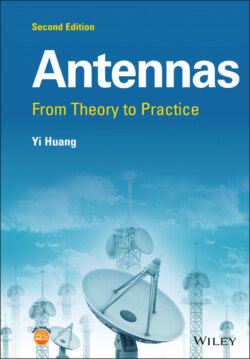Читать книгу Antennas - Yi Huang - Страница 25
1.4.3 Maxwell’s Equations
ОглавлениеMaxwell's equations are a set of equations first presented as a distinct group in the latter half of the nineteenth century by James Clerk Maxwell (1831–1879) pictured in Figure 1.13. Mathematically, they can be expressed in the following differential form:
(1.29)
where
ρ is the charge density.
is a vector operator;
∇× is the curl operator or called rot in some countries instead of curl.
∇• is the divergence operator.
Here we have both the vector cross product and the dot product.
Figure 1.13 James Clerk Maxwell
Maxwell’s equations describe the interrelationship between electric fields, magnetic fields, electric charge, and electric current. Although Maxwell himself was not the originator of the individual equations, he derived them again independently in conjunction with his molecular vortex model of Faraday's lines of force, and he was the person who first grouped these equations all together into a coherent set. Most importantly, he introduced an extra term to Ampere’s Circuital Law, the second equation of (1.19). This extra term is the time derivative of the electric field and is known as Maxwell's displacement current. Maxwell's modified version of Ampere's Circuital Law enables the set of equations to be combined together to derive the EM wave equation, which will be further discussed in Chapter 3.
Now let us have a closer look at these mathematical equations to see what they really mean in terms of the physical explanations.
